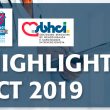This very interesting work leaves us with a sour taste in our mouth, as it failed to meet its primary endpoint. Using genotype to individualize treatment with a P2Y12 inhibitor in patients with acute coronary syndrome or stable patients after a scheduled angioplasty compared with conventional treatment with clopidogrel does not reduce the risk of...
New European Guidelines on the Management of Lower Limb Acute Ischemia
Clinical practice guidelines are usually tedious and, frankly, while a lot of people make an enormous effort to write them, they are ultimately read in full by just a few. These new European Guidelines on the Management of Lower Limb Acute Ischemia represent a special team effort, since they include physicians, cardiologists, surgeons, and interventionists,...
Soon after the EXCEL “Scandal” the NOBLE 5-year Outcomes Come Out: Mere Coincidence?
There is no such thing as coincidence, at least not for the evidence-based medical science. This is what the NOBLE 5-year outcomes, soon to be published in the Lancet, seem to say, in line with the BBC exposé of the EXCEL study. The NOBLE study randomized patients with left main disease to compare PCI vs...
The Most Read Articles of December in solaci.org
1- Consensus on How to Conduct Follow-Up in Peripheral Vascular Disease Peripheral vascular disease involves multiple areas and, therefore, can have very different presentations (from complete lack of symptoms to disabling symptoms). Depending on clinical presentation, general condition, anatomical localization, and lesion extension, revascularization can be indicated alongside optimal medical treatment. Read also HERE 2-...
Latest Guidelines “Dropped” After Scandal Over EXCEL Results
The European Association for Cardio-Thoracic Surgery (EACTS) formally withdrew its support for the latest coronary revascularization guidelines following a BBC investigation suggesting that data from the EXCEL trial might have been manipulated. The recommendations for left main coronary artery revascularization featured in the 2018 guidelines, which were written jointly with the European Society of Cardiology...
Secondary Prevention: A Responsibility We Should Not Delegate
After coronary angioplasty, the use of drugs whose efficacy for the reduction of major events has been proven declines over time, which is associated with worse patient prognosis. Sometimes, without meaning to, we convey to patients the idea that, once the stent has been implanted, the artery is “cured” or that the only potential future...
AHA 2019 | COLCOT: Colchicine and the Return of the Anti-Inflammatory Theory
Low-dose colchicine seems to reduce the risk for new cardiovascular events in patients with a history of infarction. This drug is usually indicated for anti-inflammatory therapy in gout and pericarditis. Now, it could also reduce the rate of ischemic events as secondary prevention according to the COLCOT trial presented during the American Heart Association (AHA)...
TCT 2019 | Onyx ONE: Durable Polymer vs. Polymer-Free Stent with Only One Month of Dual Antiplatelet Therapy
Courtesy of the SBHCI. This is the first randomized study comparing a durable-polymer drug-eluting stent (zotarolimus-eluting stent Onyx) and a polymer-free drug-eluting stent (biolimus-A9-coated stent BioFreedom), with only one month of dual antiplatelet therapy in patients at high risk for bleeding. Onyx ONE was a study conducted at 84 sites that randomized 1:1 2000 total patients at...
ESC 2019 | New European Guidelines on “Chronic Coronary Syndromes”
In Paris, during the European Society of Cardiology (ESC) Congress 2019 Scientific Sessions, new guidelines for the diagnosis and treatment of chronic coronary syndromes were presented. This document, simultaneously published in Euro Heart J, updates the 2013 guidelines on stable ischemic heart disease and takes out the word “stable” so as to emphasize that the...
ESC 2019 | ISAR-REACT 5 | Which Is Better in ACS, Prasugrel or Ticagrelor?
Courtesy of Dr. Carlos Fava. The benefit of dual antiplatelet therapy in acute coronary syndromes (ACS) has been proven long ago, and both prasugrel and ticagrelor have offered best results than clopidogrel. However, nowadays, it is unclear which of them is superior in the long term, taking into account the fact that one starts to...









